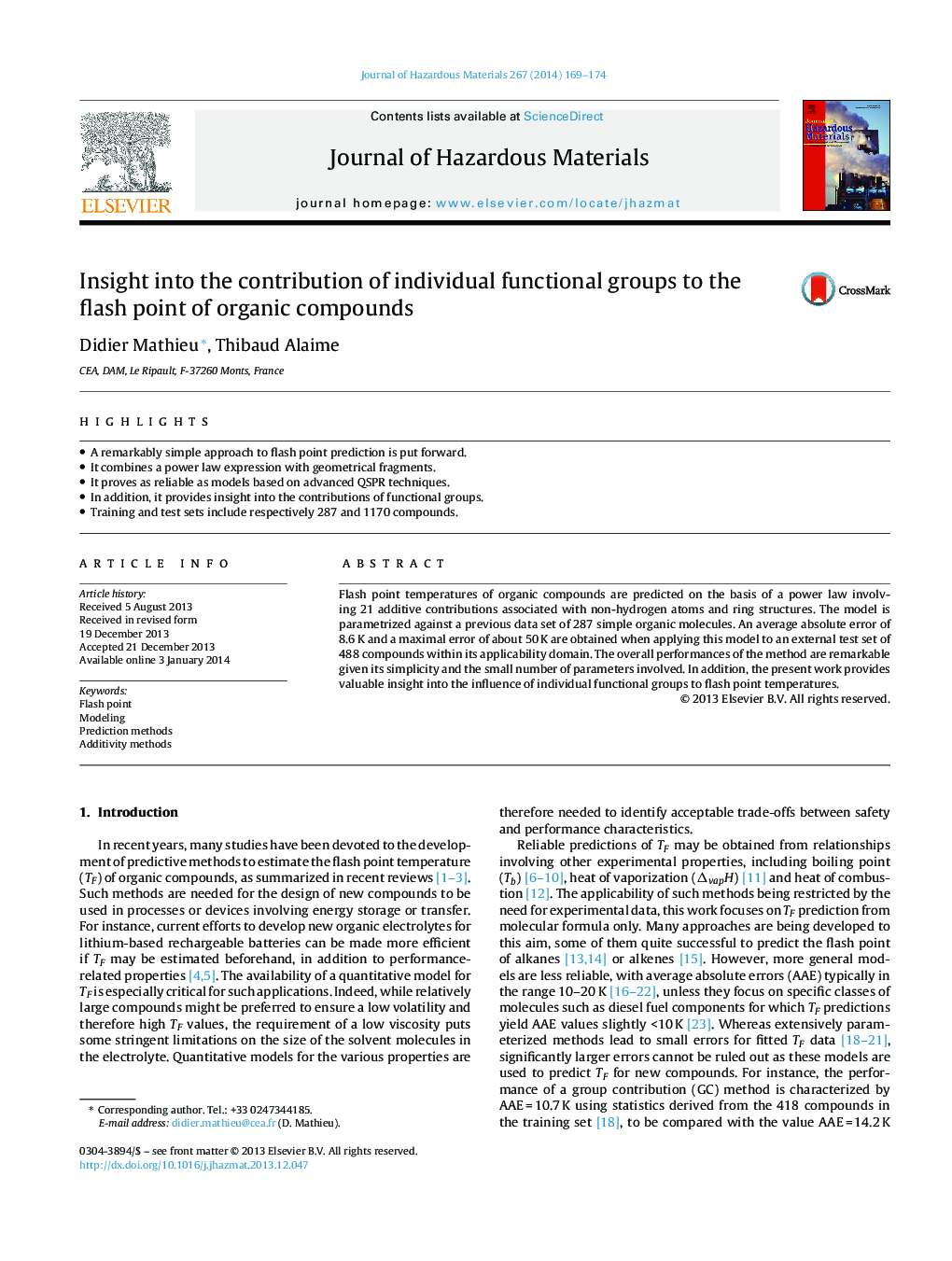| Article ID | Journal | Published Year | Pages | File Type |
|---|---|---|---|---|
| 576917 | Journal of Hazardous Materials | 2014 | 6 Pages |
Abstract
Flash point temperatures of organic compounds are predicted on the basis of a power law involving 21 additive contributions associated with non-hydrogen atoms and ring structures. The model is parametrized against a previous data set of 287 simple organic molecules. An average absolute error of 8.6Â K and a maximal error of about 50Â K are obtained when applying this model to an external test set of 488 compounds within its applicability domain. The overall performances of the method are remarkable given its simplicity and the small number of parameters involved. In addition, the present work provides valuable insight into the influence of individual functional groups to flash point temperatures.
Related Topics
Physical Sciences and Engineering
Chemical Engineering
Chemical Health and Safety
Authors
Didier Mathieu, Thibaud Alaime,
